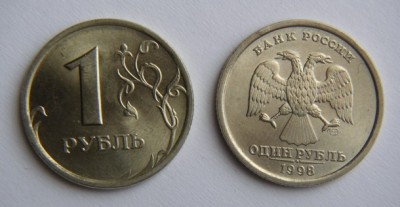 For months, Russia’s ruble has been falling in line with a decline in oil. But now, the selloff has stepped up a gear amid a broad rout in emerging-market currencies.
For months, Russia’s ruble has been falling in line with a decline in oil. But now, the selloff has stepped up a gear amid a broad rout in emerging-market currencies.
Monday, the dollar shot above 63 against the battered Russian currency, even despite a modest pickup in the price of oil, the country’s chief and crucial export. And talk of dollar selling on the part of the central bank wasn’t enough to turn the ruble around, especially in light of the percentage-point rise in interest rates imposed last week, which was more timid than some market-watchers had been expecting. Local traders say the atmosphere is darkening.
“There’s no relief in sight, the mood on the market is pessimistic. Any recovery in the ruble is used to buy into foreign currencies,” said Igor Akinshin, a trader at Alfa Bank.
Hit by capital flight, a sluggish economic performance and Western sanctions, the ruble has been depreciating steadily in the second half of this year. In January, one dollar bought 33 rubles. A rapid drop in oil prices, which started in September, exacerbated the trend and sent the ruble to record lows despite the central bank’s strive to halt its slide with massive currency interventions.
“December could prove the worst month for the ruble this year. In the meantime, the central bank is clearly reluctant to use interest rates against the speculators,” said Piotr Matys, rates strategist at Rabobank.
Russian authorities, including President Vladimir Putin , say the ruble’s decline is the result of speculative activity, which they vow to stamp out.
Russia’s central bank, which acts as the country’s financial markets regulator, has ordered the Moscow stock exchange to stop trading in some derivatives for some clients citing “possible market manipulations.”
The country’s bond markets are also under strain. Russia’s dollar bond maturing in Sept. 2023 is yielding 7.102%, up from 6.633% on Friday. Yields rise when prices fall. Meanwhile, the cost of insuring against a default in Russian government debt is rising. It now costs $532,000 a year for five years to insure against a failure to repay a notional $10 million of Russian debt, up from $488,000 Friday.
Investors say a cocktail of a possible hawkish shift in tactics from the U.S. Federal Reserve, whose two-day meeting ends Wednesday, and the traditionally illiquid period at the end of the calendar year, are making matters worse.
“Emerging market sentiment has really soured in this last month along with commodity prices. This is now combining with seasonal illiquidity to make markets go down in big steps. I don’t think anybody is willing to step in front of that in the last two weeks of the year,” said James Barrineau, co-head of emerging market debt at Schroders.
In the long term, the 44% decline in oil prices this year should be good news for countries such as India and Turkey, which import almost all of their energy needs. Instead, their currencies Monday skidded to their lowest point since January. Asian markets were hit widely, particularly with investors unnerved by the prospect that the Fed could signal a firm intention to start raising interest rates, a risk that has long been a bugbear of this region and of emerging markets globally.
Among the worst hit were the Indonesian rupiah, which plummeted to its weakest level since the 1998 crisis, and stocks in Thailand, which slumped as much as 9% before recovering. Losses in one market are now leading to forced selling in others, investors say.
“It’s classic portfolio contagion. The Indian rupee and the Indonesia rupiah are getting sold because people are taking risk off generally. India should be better off from lower oil prices. It’s a big importer,” said Paul McNamara, an emerging-markets bonds investor at GAM with around $6.5 billion under management.
WSJ
Update: The Russian ruble has now fallen 48.4 percent against the greenback this year, according to data from the Moscow Exchange. The drop means it has collapsed even further than the Ukrainian hryvna, which has weakened by 47.9 percent since January, according to XE.com.

Leave a Reply
You must be logged in to post a comment.